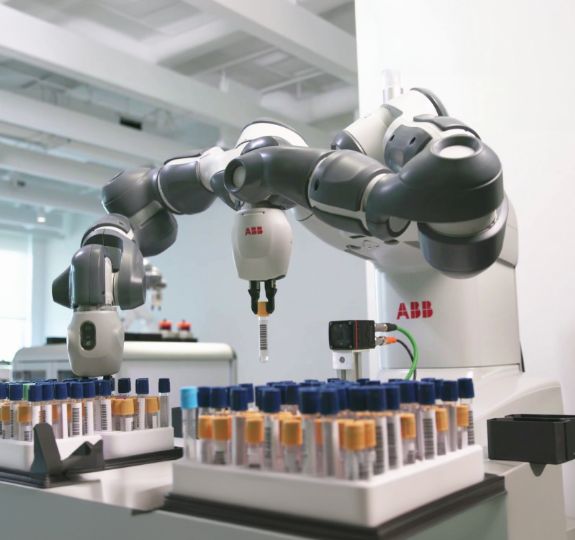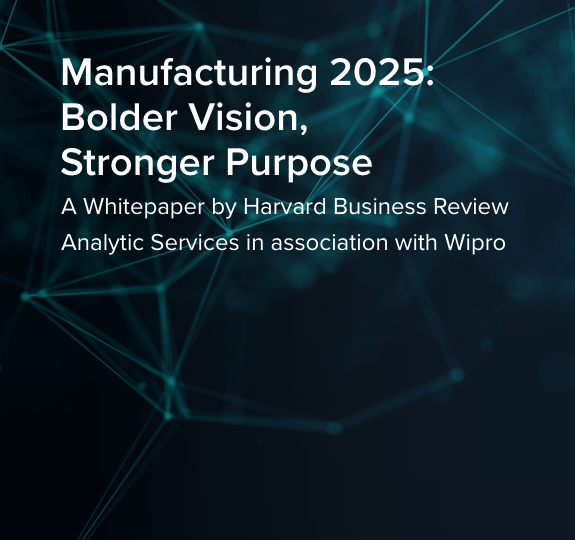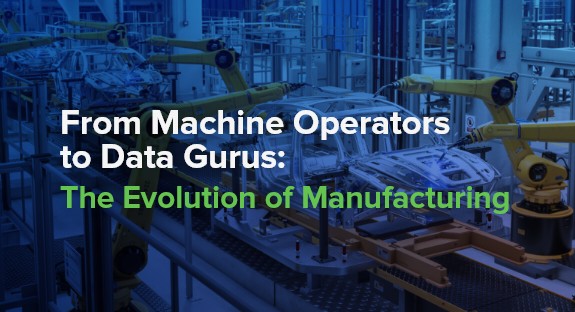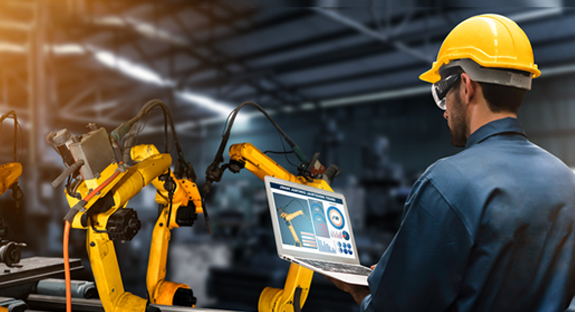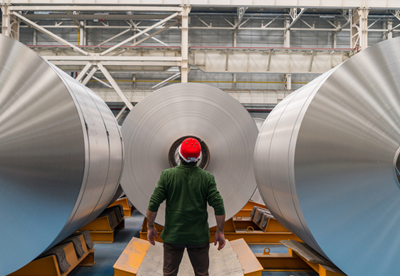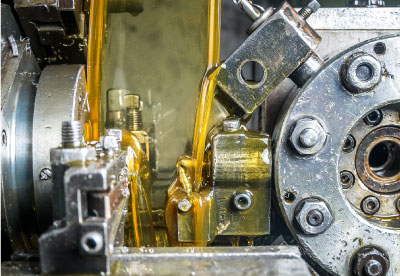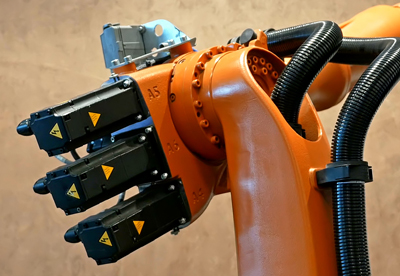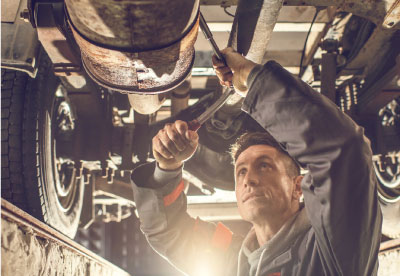Wipro enables simulation for workload and capacity in field services to improve utilization rate by 35% using cloud based, in-memory Anaplan solution for a leading energy management and automation service provider
Success for Manufacturers is no longer about ensuring aesthetically pleasing or ergonomically sound products.

Wipro is a strategic partner, providing application support & development for Infor LN ERP applications & driving end to end testing & data migration activities in ongoing transformation program.
Watch the video to hear Jens Nielsen, CIO at Assa Abloy talk on Wipro's efforts to implement on-demand hybrid IT infrastructure, fueling enterprise-wide digital transformation

Matthew Perry, CIO, DuluxGroup talks about how Wipro proved to be a strategic partner for their digital journey.

Manufacturer overcomes cost and downtime challenges, enables effective data management and great user experience
The Swedish industrial company delivers enhanced customer experience and achieves 40% improvement in time-to-market by connecting its equipment and enabling data integration with enterprise IT
Learn how Wipro optimized Domtar’s order management system, with a 70% reduction in order processing and a 50% reduction in customer and product onboarding times.
The automotive industry's future is no longer solely dependent on hardware. Today's cars can contain as much embedded software as a rocket. Automakers must develop fully software-defined vehicles, resulting in a "cloud car" that is constantly updated and remains digitally relevant for more than a decade. Are they prepared to install the necessary AI/ML/Cloud solutions in their vehicles? Do they believe they are ready to implement open-source IPs through innovation hubs?
The metaverse is leading to a paradigm shift in how consumers, suppliers, partners and employees interact to create, buy, sell, spend, learn and collaborate....
Cloud innovations are providing the manufacturing industry with newfound business opportunities through valuable customer insights, greater agility, and reduced costs. Within the industry, the businesses that have established themselves as cloud leaders have adopted multifaceted strategies to achieve these kinds of benefits. By examining their investments and tactics, organizations that are new to cloud computing can develop effective pathways to improve their maturity and fuel ways to redefine their business models.
Digitalization to play a vital role in driving manufacturers’ sustainability agenda, making green technology a paradigm for future manufacturing enterprises
The automotive industry's future is no longer solely dependent on hardware. Today's cars can contain as much embedded software as a rocket. Automakers must develop fully software-defined vehicles, resulting in a "cloud car" that is constantly updated and remains digitally relevant for more than a decade. Are they prepared to install the necessary AI/ML/Cloud solutions in their vehicles? Do they believe they are ready to implement open-source IPs through innovation hubs?
According to Bloomberg, the market for electric vehicles is growing at a rate of 33.6% (CAGR) with sales expected to exceed $3 trillion by 2027.
Manufacturers were once many steps removed from their customers, with wholesalers and distributors providing a crucial link to sales.
The needs of each consumer and each business are unique. Satisfying these needs quickly, efficiently, and at an optimal cost is the holy grail of discrete manufacturers.
One of the key advantages of Indian manufacturing used to be low labor costs. This is no longer the case, as advanced economies are increasingly automating routine low-skill tasks, and wages are gradually rising in India.
The big question for manufacturers today is not so much what to digitalize but when to digitalize to maximize value.
The transition to green metals is imperative for steel and aluminium manufacturers to achieve their net climate goals and enhance their competitiveness.
A modern, smart approach to service management, enabled by digital technologies and measured by customer lifetime value, is key to achieving sustainable growth within the service business
Pandemic has accelerated the digitalization of automotive sales
Two key elements in the Metals industry have undergone dramatic change due to COVID-19: Capacity and cost
COVID-19 put the brakes on the automotive industry. While recovery could take years, the change the pandemic is driving has been long-awaited
COVID-19 became the brutal left hook that knocked out the manufacturing sector in 2020. It was an uneven fight. The pandemic disrupted supply chains, shrunk demand for high-value goods – such as primary metals, industrial machinery, and automobiles – and labor shortages completely “manu-fractured” an already-struggling sector.
5G teleommunications technology is a game-changer for manufacturers
There have been significant disruptions in supply chains due to the COVID-19 crisis. If we look at the past six months, we can see extreme cases of supply and demand shocks. The International Monetary Fund has estimated that the global output will shrink by 4.9 percent in 2020.
The servitization model and Industry 4.0 manufacturing initiatives go hand in hand. Here are 3 benefits servitization brings manufacturers.
Manufacturing smart and connected products requires a Smart Factory.
First, some good news. Over the last couple of months, the manufacturing industry has witnessed the beginnings of recovery, although we are well aware that the industry has been badly hit and disrupted by the pandemic.
Organizations are increasingly adopting Microservices to benefit from evolving cutting-edge technologies
With the effects of the pandemic already evident, the world as we know it has changed overnight. Running against time, enterprises are now faced with the predicament of having to create new business models, accelerate their fulfillment through new channels, and compete with a mix of companies that never featured on their SWOT analyses before.
Not long ago, manufacturing’s primary concern was about making products that worked well and looked attractive. Today, manufacturers are challenged to look at their task from a much broader perspective.
Gartner predicts that by 2025, 80% of enterprises would be migrating away from their on- premise hosted data centers to cloud, as part of their Data Center (DC) Exit strategy. However, it is important to clearly define the right cloud strategy to accelerate cloud migration and the transformation journey.
The first evidence of the “wheel” dates back to 3,500 B.C. During that era, it served as a potter’s wheel. The idea gradually evolved, and in the next few hundred years, it found its use in chariots. Developments thereafter are well documented – from motor vehicles to aeroplanes to machines, and practically everywhere else. We never stopped innovating after inventing the wheel.
The unprecedented crisis has given manufacturers the opportunity to rethink strategic priorities, digitalize their processes, and transform business models to prepare for the new normal
Cloud delivers the visibility, agility, and resiliency you need to mitigate present and future challenges
As manufacturers start rebuilding for the future, they need to think Digital First and People First
If flying cars don’t do it, mobility’s future will blow your mind!
The current COVID-19 pandemic has had a significant impact on business. Emerging out of this crisis will be a journey and we will have to continuously observe, process new information and improvise to be relevant to our customers.
If there's one thing that manufacturing leaders have come to realize about Industry 4.0, it's that the future means being on the cloud, first and foremost.
The word ‘Weapon’ is generally associated with something destructive but was invented by our ancestors as a means to save them from unexpected events and attacks from enemies.
Safety on the shop floor is a key area that manufacturers need to monitor, from a humanitarian as well as a government regulatory compliance standpoint.
Reimagine the power of AI for increased value to your business
While direct to consumer industries such as retail have been abuzz with the need to deliver better customer experience (CX) for a while, it’s not just limited to them anymore
Manufacturers are talking about developing manufacturing and delivering customer-centric products since the beginning of the Era of Manufacturing.
As we barrel forward into the digital age, technological change impacts every industry and transforms some entirely.
A decade ago, the idea of ride sharing was born and the concept of access over ownership disrupted traditional business models.
Digitalization is transforming the manufacturing industry, and no one wants to be left behind.
Manufacturers are talking about developing manufacturing and delivering customer-centric products since the beginning of the Era of Manufacturing.
Artificial Intelligence (AI) will be changing the way we look at manufacturing value chain.
We are in the midst of the Fourth Industrial Revolution that’s blazing a digital trail across the manufacturing industry.
The New Industry 4.0 Revolution
Manufacturers have been talking about developing manufacturing and delivering customer-centric products since the beginning of the Era of Manufacturing.
Earlier this year, UPS and Waymo announced their partnership to begin self-driving package pickup in Arizona. This partnership is aimed at improving customer service and network efficiency. Waymo’s autonomous vehicles will shuttle packages from stores to UPS facilities.
As complex operations continue to limit growth and innovation, chemical companies are looking up to the cloud to innovate and set the foundation for a digital chemical enterprise.
One Package, One Vendor, One Contract. Learn why Wipro ExpressERP, powered by SAP, is one of the best solutions for chemical companies to move their ERP systems to the cloud.
Chemical companies can benefit from a Managed Cloud as a Service (MCaaS) model as it helps enable savings of up to 30% over a 5-year TCO lifecycle. Watch the video to learn more.
Smart Manufacturing, Industry 4.0, Industrial Internet of Things (IIoT) and Digital Manufacturing are not just concepts any more. Let's have a look into the future of manufacturing.
From the outset of this year and beyond, organizations across the globe have faced uncertainty -- especially manufacturers. Now, many of those same businesses must answer tough questions to mitigate COVID-19 business effects and transform business priorities in response.
The elevator service business has, and continues, to undergo many changes. Overwhelming market competition coupled with relentless cost increases has placed an unprecedented squeeze on sales and margins.

 Locations
Locations